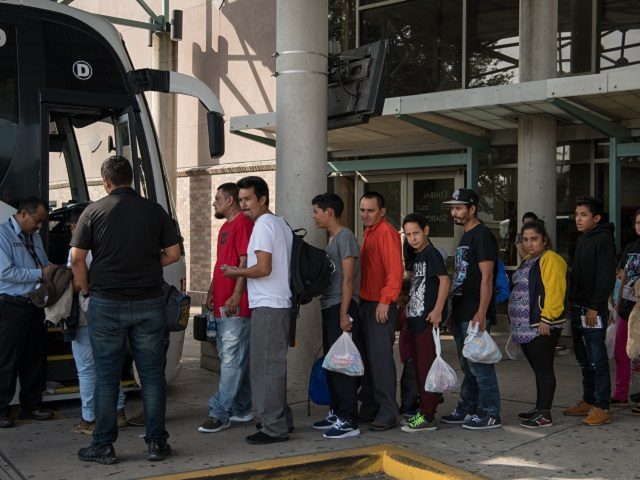Federal law enforcement sources report that Border Patrol agents will now rely on Immigration and Customs Enforcement (ICE) officers to conduct migrant releases when detention space is not available in the Texas Rio Grande Valley. Migrant releases coordinated specifically by Border Patrol directly into border communities will be a last-resort option. Border Patrol officials are instructed to conduct the local releases only when ICE cannot cope with the level of arrests made by the Border Patrol.
The new policy may bring some relief to local shelters in South Texas border communities located in the Rio Grande Valley depending on where ICE Enforcement and Removal Operations officials choose to release the migrants. The change in procedure is likely driven by increased media attention to the issue. It will likely result in migrants being released away from border communities in the Rio Grande Valley.
According to sources familiar with the new policy, ICE will transport many of the released migrants away from the immediate border region to family residential detention centers to await release. If this occurs, it will require significant funding for transportation costs associated with the movement of migrants to other cities.
Family residential detention centers operated by ICE are in smaller Texas communities surrounding San Antonio with insufficient public transportation resources to move the migrants. Sources tell Breitbart News this increases the likelihood that migrant releases will increase in San Antonio. The move is largely designed to change the current optics of where migrants are released. It is unlikely to impact the increased flow of arriving migrants.
As reported by Breitbart News, the ill-timed migrant releases before the winter storm were an ominous sign for border communities. Many lacked sufficient resources to deal with hundreds of released migrants. According to law enforcement sources, COVID-19 testing of released migrants is still not happening in many border communities.
During the cold snap in Texas, humanitarian shelters along the border quickly filled as transportation companies shut down operations. In some cases, migrants turned to local businesses for warmth as power failed at non-government humanitarian shelters. Residents in one Texas border community reported seeing migrants wandering through large department stores where, fortunately, power and heat were still available during the crisis.
Mayor Bruno Lozano of Del Rio, Texas, posted a YouTube video strongly urging President Biden to halt migrant releases within his city and surrounding communities. In the video, Mayor Lozano highlights the devastating conditions caused by recent freezing weather and the lack of available resources to cope with the released migrants. He raises COVID-19 concerns within the community and pleads for sufficient resources to address the influx of migrants.
Although little has changed regarding the situation in West Texas, law enforcement sources indicate the message may have resonated elsewhere as the new practices regarding how migrants are released in the Rio Grande Valley suddenly changed.
The volume of arrests within the Rio Grande Valley will determine how long the new plan remains in effect. According to CBP, Border Patrol agents in the Rio Grande Valley arrested more than 69,000 migrants since the start of this fiscal year, which began in October 2020, through January. Compared to the same time frame last fiscal year, the increase in arrests is a staggering 136 percent.
Breitbart News reached out to ICE officials for additional information about the policy change. A response was not available by press time.
Randy Clark is a 32-year veteran of the United States Border Patrol. Prior to his retirement, he served as the Division Chief for Law Enforcement Operations, directing operations for nine Border Patrol Stations within the Del Rio, Texas Sector.

COMMENTS
Please let us know if you're having issues with commenting.